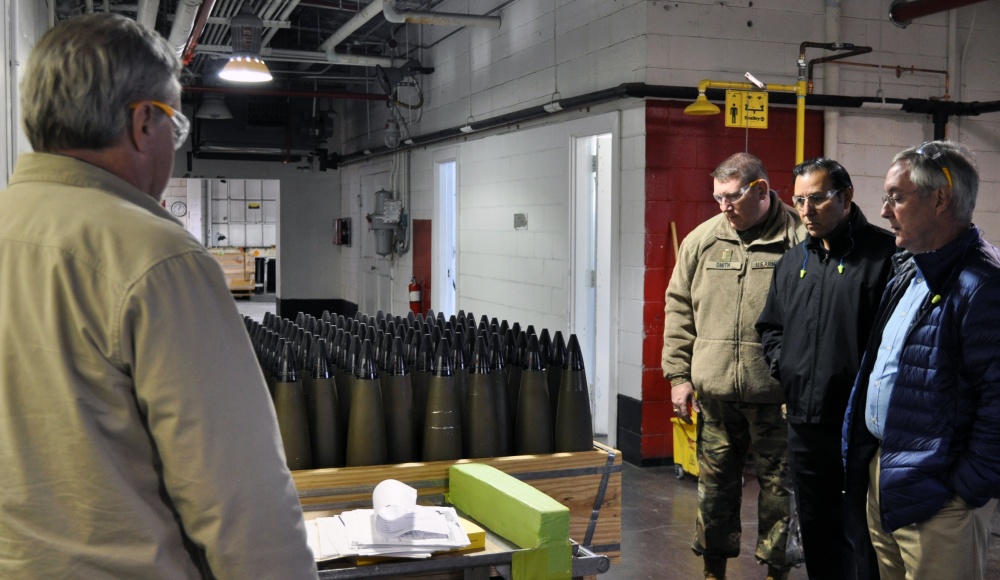
(CRANE) – Ammunition readiness depends on being able to deliver ready, reliable and lethal munitions at all levels of war.
Mallory Haag, of Crane Army Ammunition Activity, reports a key part of sustaining this readiness comes from the Organic Industrial Base optimizing its depot operations to ensure it has space to store and quickly move out the latest ammunition the warfighter needs. Efforts to maximize demilitarization operations to create increase storage availability for are vital this maintaining munitions readiness.

Members of the U.S. Army Materiel Command, Joint Munitions Command, Joint Program Executive Office and installations throughout the OIB met at Crane Army Ammunition Activity the week of November 25 with the focus of improving demilitarization processes and machinery at Crane and throughout the JMC Enterprise. JMC Demilitarization Director Celia Hadden said the efficiency of the demilitarization operations directly contributes to munitions quality and readiness.
“By their maximizing demil execution as well as providing demil stocks to other installations, Crane is freeing storage space we need for new munitions,” Hadden said. “This enables more efficient and effective munitions out load operations at Crane and impacts enterprise-wide capabilities.”
Members of the group who met looked closely at the creation and maintenance of machines utilized at Crane Army and where the responsibilities lie.
Chief among items addressed was when maintenance crosses into the modification and whether modification lies within Crane Army’s purview or whether it is the responsibility of other OIB sites.
Hadden said that by having everyone together on site, everyone was better able to identify issues and develop solutions quicker.
“We identified some challenges that eventually developed into action items that we took away and worked,” Hadden said. “There were some issues to follow up to make sure we had everything covered, but being together helped us all really quickly to have a better common understand and site picture.”
Ownership of equipment was also key among items discussed. The transfer of equipment would allow sites that have been operating machines for long periods of time to transfer ownership in order to consolidate efforts and streamline processes.
Justin Cowell said the collaboration between commands allowed solutions to come about more easily and effectively.
“It’s nice for people to come up and see some of the things that sometimes keep us from our mission, the things we are fighting, like elements and equipment,” Cowell said. “It helps them to better understand some of the problems that we are running into.”
Cowell said the event was helpful for all involved in understanding and in improving the ways in which the commands and sites operate and what they can all do for one another to increase effectiveness.
“The best part for us is taking these folks who fund us out into the field to the buildings so they can actually see what they’re paying for,” Cowell said. “You’re in that building and see the robotic arms moving or the equipment moving, that’s when the rubber hit’s the road. That’s when you see that this is real.”
However, the biggest success, according to Hadden, was being able to thank various sites and recognize CAAA for its contribution and hard work.
“It can’t be emphasized enough how essential Crane is in providing demil execution,” Hadden said. “They have so many varied processes, technologies, and programs that they are executing and it’s very important to the demil enterprise.”
Crane Army Ammunition Activity produces and provides conventional munitions requirements in support of U.S. Army and Joint Force readiness. It is one of 18 installations of the Joint Munitions Command and one of 23 organic industrial bases under the U.S. Army Materiel Command, which includes arsenals, depots, activities and ammunition plants. Established Oct. 1977, it is located on Naval Support Activity Crane.



